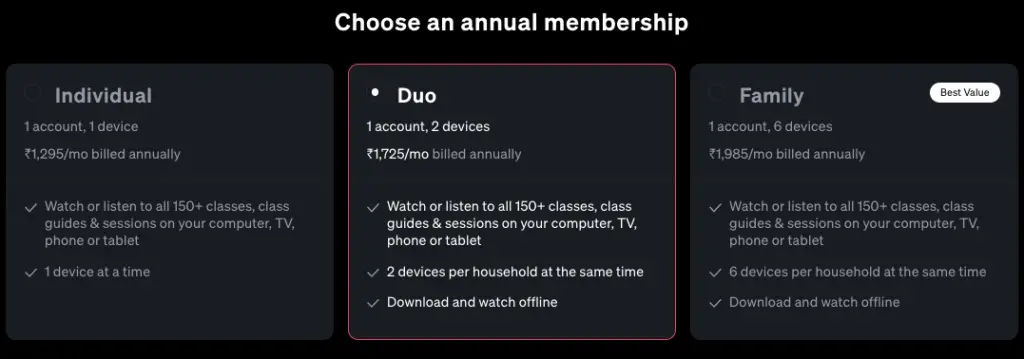Among a sea of MOOC giants like Udemy, Udacity & Coursera, MasterClass stands out as an outlier. And the differentiation between these two sets of MOOC companies is mainly due to the following reasons:
1. Unlike Udemy, Udacity & Coursera, which allow thousands of individuals and institutions, basically almost anyone, to offer courses through their platform, MasterClass only features courses from a small number of world-class masters.
2. While Udemy, Udacity & Coursera have a massive library of courses featuring thousands & lakhs of courses, MasterClass only has close to 150+ classes.
MasterClass is a business case study worth studying because it is a lesson on how to stand out in a crowded market. Secondly, it can also help ignite ideas — ranging from creating individual courses basis the skills you already have or launching another startup in the MOOC segment.
So, In this piece, I will run you through MasterClass’s founding and growth story, MasterClass’s business model and wrap up with a critique of the business — all of which will help you learn from the story of MasterClass.
MasterClass Growth & Founding Story
The MasterClass origin story begins in 2012 after David Rogier, now MasterClass CEO quit his job at Harrison Metal, a Silicon Valley investment firm started by Michael Dearing, David’s former Stanford professor. During his last conversation before leaving, Rogier informed that he aspired to start his own business. On hearing this, Dearing offered Rogier $500,000.
At that point in time, Rogier knew he wanted to start a business, but he didn’t even have an idea to work on. So, Rogier was honored by Dearing’s offer to invest in him despite not even having an idea.
Rogier set out to find an idea with the money in his hand. To someone like us, this would feel like a dream come true. But the money without an idea/traction also put immense pressure on Rogier. A year passed without any semblance of an idea, and Rogier was in a dark place.
An idea finally revealed itself to Rogier after remembering a story his grandmother told him years ago. The story’s main lesson was, ‘ Education is the only thing no one can take away from you.’
Keeping that lesson in his mind, Rogier decided to empower people by educating them & giving them a superpower nobody can take away from others. While the idea of educating people was not revolutionary in and of itself, what made MasterClass remarkable was the unique idea of only getting a self-enforced & limited set of world-class masters to teach on the platform. Rogier also decided to create courses using a Netlifx-level of production quality, which played a big role in attracting learners.
As you can expect with any two-sided marketplace, the first step was to gather the supply side. In the case of MasterClass, this meant onboarding the first few instructors become the biggest challenge. After eight to ten months of cold calling, emails, and last-minute cross-country flights to meet with people, Rogier was finally able to onboard the first few instructors.
When MasterClass launched in 2015, the platform had courses from three instructors. From the beginning itself, MasterClass was received well by its target audience. Within four months of launching, students from across the world had bought 30,000 courses.
Top-quality courses from world-class instructors lead to subscriber growth, which in turn led to more subscribers and brand value, attracting more course instructors on the platform, leading to a self-turning flywheel of growth.
Twelve new courses were added in 2017 alone. As MasterClass grew, the funding rounds also grew bigger. Apart from the $500,000 that Rogier got from his ex-boss in the beginning, MasterClass raised $4.5 million in initial funding and two seed funding rounds totaling $1.9 million. The company raised $15 million in 2016, $35 million in 2017, $80 million in 2018, $100 million in 2020 and $225 million in 2021. After its last round of funding, MasterClass was valued at $2.75 billion.
MasterClass Business Model
MasterClass makes money using the classic subscription model, selling annual memberships to smaller units like individuals & families and companies looking to buy collective memberships for employees. Close to the end of 2021, MasterClass had a whopping 1.5 million subscribers.

At the time of writing this, the MasterClass subscription comes with 150+ classes from experts across 11 categories like cooking, leadership, photography, writing, and more. Subscribers are given a 30-day satisfaction guarantee, using which they can demand a full refund if they realize MasterClass isn’t for them. Considering that each class has 20 lessons of 10 minutes each, the 150+ class MasterClass subscription comes with 500+ hours worth of educational content.
If you’re wondering how much of the money made by MasterClass is given back to course instructors, they were being given at least $100,000 per course plus a 30% revenue cut way back in 2017. The deal terms might have changed with time and might vary depending on different instructors, but the old arrangement gives an understanding of the kind of deals MasterClass, and instructors might be signing.
MasterClass, being a private company, is not publicly required to disclose revenue. However, in 2018, David Rogier ( MasterClass CEO ) informed Techcrunch that revenue would match that of Udacity’s — which stood at $70 million.
With the limited public information about MasterClass, it is impossible to determine MasterClass revenue and whether MasterClass is profitable or not. In total, MasterClass has raised $461 million in funding over 12 rounds. After its last funding round of $225 million in 2021, MasterClass was reportedly valued at a whopping $2.75 billion, at more than a 10x multiple of revenue estimates we arrived at earlier.
A Critque of MasterClass
From a business perspective, MasterClass is a success story. But for a company that aims to sell ‘Mastery,’ the degree to which MasterClass courses create masters is questionable. For example, how much can a person taking a Serena Williams Tennis class learn from a course that involves no practice?
To be fair, it isn’t that MasterClass isn’t valuable. The question is how valuable it is. In recent times, MasterClass has launched a new initiative called MasterClass Sessions, possibly in response to its regular critique of being unable to help students learn practically.
MasterClass sessions are a new hands-on format where students learn by working on projects as part of a structured curriculum. Students also engaged with a community of engaged peers and receive feedback from trained teaching assistants.
Do sessions remove all the inefficiencies of the MasterClass format and address the critique usually directed towards the company? Even if they don’t entirely, MasterClass’s move to fix gaps is a good sign, and we might as well see more of such initiatives in the future.
Read More Case Studies
Shopify Business Model Case Study
DoorDash Business Model Case Study
IKEA Business Model Case Study

